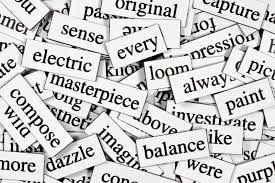Tips on How Writers Can Deconstruct to Nail Genre
This month, with the launch of my highly anticipated online course, I’ve been directing your attention to the need to understand and target genre.
Why is this important? Because all too often writers work hard to pen a novel without any thought to genre. Sure, they might know they’re writing a mystery or a fantasy novel, but they haven’t thought of the end goal—which is to get that book in the hands (or onto the ereader device) of the audience they are writing for.
When asked “Who is your audience? Who are you writing this book for?” many writers really don’t know. Sure, they hope those mystery lovers will love their book. But if those writers haven’t done their homework and studied iconic novels in that genre, their books aren’t going to quite fit. Kind of like Cinderella’s stepsisters trying to force that tiny glass slipper onto their big fat feet.
Why is this a problem? Because, as I mentioned in last week’s post, you’re creating a product and hoping that product meets reader expectations. If you target a wide audience by labeling your novel merely as “mystery,” you’re generalizing, and hence competing with hundreds of thousands of other books.
For best success, you don’t want to cast a wide net (and get tangled with all the other thousands of nets out there). You want to narrow your aim and target a niche readership hungry for a certain type of story. Sure, you might pull in other readers in the process, but the more you narrow in on a niche audience, the better chance you have for bigger sales.
Right, it’s not all about sales. But, face it—if your books sell well and get rave reviews from your targeted readership, word will spread. More readers will find and love your books. And that’s what every writer wants—a happy, satisfied audience.
And the best way to learn to target a niche genre is to deconstruct books in that genre.
So, What’s Deconstructing All About?
I often encourage my clients who are struggling with nailing their genre to highlight or underline (in the novels they “deconstruct”) elements they are struggling with, such as the way backstory is infused into present action, the way emotion is revealed by showing rather than telling, how dialog is distilled and compressed.
I assumed aspiring writers did this kind of homework, but it appears few actually do. Sure, they’ve read some books in their targeted genre, but they haven’t studied hard. For writers who take their careers seriously, it is essential to take a lot of time to break down others’ novels and pick them apart to understand why they work. Not plagiarize—analyze.
By drawing from a number of different best-selling authors in the genre you want to nail, you will see some similarities and some differences. It’s important to note both, for every author should have her own unique voice and writing style, and showcase original ideas. By taking notes as you go through each novel carefully, you can compare these books and see what they share in common.
Here are some ways you can get a feel for the way authors write in your niche genre:
Make a chart listing ten best-selling novels in the genre you want to write in. If you haven’t done your homework, spend time sifting through the best-sellers in your target genre and reading their descriptions, hopefully using KDSPY, and pick ten novels that really fit the genre and are the most similar to the book you have in mind writing. These novels don’t have to have similar plots or settings, but they should be written in perfect style for the genre.
Using a huge piece of tag board and writing small will allow you to see the big picture once you are done. List the titles down the left side and make a grid: a row for each title, and vertical lines separating all the elements you want to make observations about.
Across the top of the columns, list the elements you want to compare. How extensive the chart is your call. You may only want to analyze a few things. Maybe many.
Some might be chapter length, number of POV characters (or what POV the novel is written in, such as first person present tense or shifting third person), balance of dialog to narrative to action, what happens in the opening chapter (or you could choose the first three scenes, one column for each), how quickly and in what manner conflict is introduced, the sophistication or simplicity of the writing itself, sentence length, type of scene ending (hanging, thoughtful, etc.)
Note how much description is used for characters and setting. In one of your columns, write a 1-sentence summary of the plot. What’s being set up in that opening scene that screams “genre”?
What you want to notice is not just the way the story is told and unfolds but also the mechanics of the storytelling, which involves things like sentence length and type of verbs and adjectives used. Some genres use very short sentences and simple vocabulary. Some are predominantly dialog—short, crisp lines as opposed to long convoluted conversations.
Once you have filled in your chart, spend some time studying it. See what similarities there are, what differences. See what screams “genre” to you. Readers of genres expect a certain type of writing style, pacing, tone, and plot concept. For instance, some murder mysteries always begin with a dead body in the opening scene. If you are targeting those readers, you better have a dead body too.
Just an Exercise, Not a Magic Formula
This exercise is not a cure-all for a weak plot and concept, but it’s meant to help you get a feel for nailing your genre.
By taking time to deconstruct a number of other novels all the way from the opening scene to the end, you will start to see the range of variety within your genre.
When looking at the entire novel, you would also pay close attention to the premise as well as the character and plot arcs.
The Objective Is to Meet Readers’ Expectations. When you write and publish a novel, you are producing a commodity, a product. You are targeting a specific consumer that has certain expectations. Your book cover and description are a promise to your reader that your story is going to meet their expectations. The closer you can get to meeting those expectations, the happier your readers are going to be. If you are not honest with your “sales pitch,” readers will feel cheated and disappointed. Will they buy your next novel? I think not.
Targeting Genre for Big Sales shows you step by step how to search out niche genres that sell well but have manageable competition, how to deconstruct novels in your genre, and how to optimize all your marketing elements so your book will have every chance of being discovered when a potential customer searches for a book like yours.
I’ve extended the discount date, so if you enroll by March 31, you can get $100 off the regular price by using the coupon code LIVEWRITETHRIVE. CLICK HERE to enroll!
Don’t put off your success any longer. With my 30-day money-back guarantee, you have nothing to lose!
Here’s to making 2016 the year you see big sales!











Great post! I’ve done this informally with my current WIP, but this motivates me to revisit and deconstruct harder. This weekend! Thanks for this.
So how does a person find out which are the “top ten”? I’ve just done a bit of looking in Amazon and Kobo, and it appears you have to pick titles hit & miss to find out what their ratings are.
The fast, accurate, and easy way to find the top sellers on any given day in your niche genre is to use the KDSPY tool (link is in the post). It instantly shows you the rankings, keywords, average price, revenue, reviews, how much competition there is, etc. It’s invaluable. I have a whole module in my Targeting Genre course (and handouts) on the best way to use this to hit the tops of the search lists.
You’re making this too hard and not terribly accurate.
One of the first things you do is consider the books that are similar to what you are writing. What genre are they listed as? Pick books that are from traditional publishers since some self-pubs haven’t a clue about their genre or they slap on a popular genre to attract more readers.
Once you have some clue about the genre or genres to look at, do some searching of terms. If you think you may be writing urban fantasy but after several searches and reading of articles on urban fantasy tell you that you aren’t, do some more searching for terms like “contemporary fantasy.”
As a starting place for finding good writers to read in a particular genre, go to a site like RTBookReviews and read a bunch of reviews to find books similar to yours. Pick the writers who are recommended reads. It’s best to pick writers who aren’t “names.” Nora Roberts can do what she wants because she’s Nora Roberts so she’s not the best example for the books you want to emulate.
If you discover that you have done very little to no reading in a particular genre, you need to rethink your book because you will open yourself up to writing cliches, annoying readers, and making massive mistakes that will destroy the book’s market value.
Genre distinctions are a particular interest of mine so I have a number of articles on the subject at my blog. Click on the “genre” label. I am also open to questions.
I wouldn’t recommend writers limit themselves to traditionally published novels. First off, many best sellers are written and published by indie authors, and if you read authorearnings (Hugh Howey) reports, you’d see that choosing indie books is probably better. Why? Because successful indie authors have figured out how to target genre and use the appropriate keywords in their descriptions. Too often, (as I’ve noticed with two of my own publishers), publishers opt for the general BISAC category labels and don’t work on really optimizing the product pages. They perhaps don’t have interest, time, or both.
Sure, some indie authors, like many publishers, just slap on a general genre label and lump a book in with hundreds of thousands of others. Rather than going to sites and guessing which books might be like an authors, it’s better to do the homework and actually search out similar novels and see how these books are structured and written. When I did my genre experiment, I looked at both traditionally and indie published novels. I did just what I recommend to other authors, and that’s how I nailed my genre and saw success.
Of course, every author should read books in their genre, but succumbing to writing cliches and making “massive mistakes” (not sure what those are) are the domain of an amateur or weak writer. It has nothing to do with the novels a writer has chosen to study and deconstruct.
The key to all this is to find that niche genre that has a specific audience. That isn’t just looking for “fantasy” but draws huge numbers of readers because of more specific elements. No doubt Amazon realizes this is the case, since they recently introduced other search categories: moods and themes, characters, and settings. All in all, this isn’t hard, and I feel my method of breaking down best sellers is a whole lot more specific than what you are suggesting and will net successful results (as many are writing me weekly to share their big sales and hitting the tops of the best-seller lists). And I’m a case in point and can speak from my own personal success.
Hi CS, I love this article. I feel that deconstruction could be useful for any type of book, and not only for ‘genre’ books. Actually, I believe the notion of ‘genre’ has pretty much outlived its usefulness and needs to be re-thought. So many books nowadays happily cross genres boundaries, don’t you think? Your article suggests a lot more than it specifies, of course. Deconstruction of well-crafted books has got to be a help to a struggling novelist. I have had Kindle Spy for a few months and find it of limited use. Perhaps I’m not using it correctly. I wouldn’t describe it as ‘accurate’, though. In the first place, it takes a snapshot and bases its estimates of sales on whatever ratings it finds at the time, and those sales estimates are crude approximations for ranges of ratings. Second, it picks up whatever Amazon throws up in response to the keyword for phrase entered, and this is a bit hit-and-miss. Key in an author name, for example, and Amazon will provide books by other authors mixed in there. Anyway, thanks for the thought-provoking article.
Thanks, JJ. I appreciate your thoughts. And yes, it’s good to deconstruct or study any nonfiction books similar to one you might be writing for the same reasons. KDSPY works great for nonfiction (that’s what it was designed for), but I’ve found overall it works really well for fiction titles and many students of my targeting genre course have used it to great success (you’ll see one deep example in next week’s post). My course goes way more into detail about how to use it but also how important it is to grab at least one (or more) niche genres and target those specifically. Yes, some books can fit in numerous genres, but if you try to cover too much and are too vague or casting too wide a net, you end up competing against way too many books for your keywords. So it’s a blend of writing to a niche genre, then knowing how to grab and use the keywords to come up at the tops of the searches.